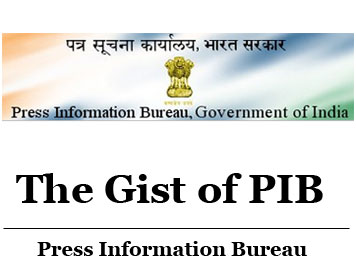Covid crisis: What India can do to
reverse economic decline (Indian Express)
Mains Paper 3: Economy
Prelims level: Fiscal stimulus programs
Mains level: Coordinate fiscal development programs required for revive the
economic decline
Context:
- Central banks can only provide money. They cannot spend it.
- Given the huge collapse in private spending, India can launch a fiscal
stimulus programme to reverse the economic decline and job losses due to the
lockdown associated with the coronavirus.
Need the fiscal stimulus programme:
- The fiscal stimulus programme will need to be bold and large, in the
range of 10-15% of GDP, much like in China, Japan and the US.
- A fiscal stimulus is not necessarily associated with rising inflationary
trends, or macroeconomic stability, or loss in growth or jobs.
- To minimise the downside risks associated with fiscal stimulus, it
should be launched as an integral part of a comprehensive structural reform
programme aimed at reviving economic growth and increasing the pace of job
creation.
How will this be achieved?
- Fiscal stimulus will need to focus more on increasing investments in
physical and human infrastructure, promoting entrepreneurship, and achieving
gender equality and green growth.
Infrastructure and growth:
- A fiscal stimulus programme during a
.......................................
CLICK HERE FOR FULL EDITORIAL (Only for Course Members)
Gaps in infrastructure financing:
- India’s infrastructure financing gap is huge, at over $1 billion a day.
It is growing exponentially.
- A fiscal stimulus could close this financing gap immediately. Shifting
the responsibility to commercial banks as the source of debt funds to
finance infrastructure projects has not worked in the past.
- Banks often tend to lack the experience in project financing, and
infrastructure financing crowds out financing available to private
entrepreneurs.
- Bank financing of infrastructure also creates asset-liability
mismatches, given that banks attract short-term deposit and infrastructure
projects need long-term investments.
What kind of fiscal stimulus needs to be?
- A fiscal stimulus needs to be well-coordinated.
- The Ministry of Finance takes the lead, it can help coordinate with the
line ministries and state governments to strengthen the institutional and
legal framework for infrastructure projects.
- Problems of moral hazard and adverse selection can be resolved by
reducing the opaque structures of projects, providing the information
required to improve their risk-return profiles, and establishing project and
sector-specific institutional frameworks with independent regulators.
- Goods and services cannot be produced and delivered without roads,
electricity and telecommunication. And moving people is as important, if not
more important, as moving goods.
- Investing more in roads, railways, bridges and schools should be an
integral part of fiscal stimulus agenda. If this is important in the current
US context, the role of infrastructure is even more fundamental in India,
where there’s much more to be done than in the US and other advanced
economies.
Entrepreneurship and job creation:
- India needs to create 10 million jobs every year to employ new people
who join the labour force every year.
- Evidence from 500 districts in India has shown that there is a strong
link between entrepreneurship and job growth. It is a worrying trend that
there are too few entrepreneurs in India for its stage of development.
- The link between entrepreneurship
..............................................
CLICK HERE FOR FULL EDITORIAL (Only for Course Members)
Gender and growth:
- An economic downturn adversely impacts women more than men. India’s
rating in gender balance in economic participation and entrepreneurship is
already amongst the lowest in the world.
- The coronavirus downturn has worsened it further. India’s fiscal
stimulus will need to focus on improving women’s access to education and
infrastructure.
- Due to the nature of household responsibilities, inadequate
infrastructure particularly affects women.
- The lack of specific transport infrastructure and paved roads within
villages is a big bottleneck for women, given the constraints in geographic
mobility imposed by safety and social norms.
- Investment in local transport infrastructure will directly alleviate a
major constraint for women to access markets.
- Women will play a bigger role in India’s future economic growth, if
supported by the fiscal stimulus programme.
- This support can come in many forms: giving priority to women-owned
enterprises in state procurement of goods and services, promoting female
labour force participation in public sector jobs, reducing discrimination
and wage differentials, and promoting women into leadership and managerial
roles.
- Indeed, empowering half of the potential workforce will have significant
economic benefits that go beyond promoting just gender equality.
Green growth:
- A key challenge for policymakers is how to prevent jumping from
‘coronavirus frying pan into the climate fire’.
- The impact of climate change is being felt by everybody in India. More
than 70% of India’s population is exposed to outdoor air pollution, which
has contributed to one in eight deaths and has reduced the average.................................................
CLICK HERE FOR FULL EDITORIAL (Only for Course Members)
Conclusion:
- India has the potential to achieve double-digit growth, thanks to
globalisation, the rise of the middle class and demographic dividend. But
growth is not automatic.
- Globalisation does not automatically engender growth. It needs
infrastructure—ports, roads, communication, education—to take advantage of
trade.
- The link between demography and growth is not automatic. A demographic
dividend could morph into a demographic disaster if people don’t have jobs.
India is well positioned to benefit from a bold fiscal stimulus programme.
Prelims Questions:
Q1. With reference to the Saras collection, consider the following
statements:
1. It is a unique initiative of GeM and the Deen Dayal Antyodaya Yojana-National
Rural Livelihoods Mission (DAY-NRLM), Ministry of Rural Development.
2. The Saras collection showcases daily utility products made by rural self-help
groups.
Which of the statements given above is/are correct?
(a) 1 only
(b) 2 only
(c) Both 1 and 2
(d) Neither 1 nor 2
Answer: ..............................
CLICK HERE FOR FULL EDITORIAL (Only for Course Members)
Mains Questions:
Q1. Discuss the role of
..........................................................?




